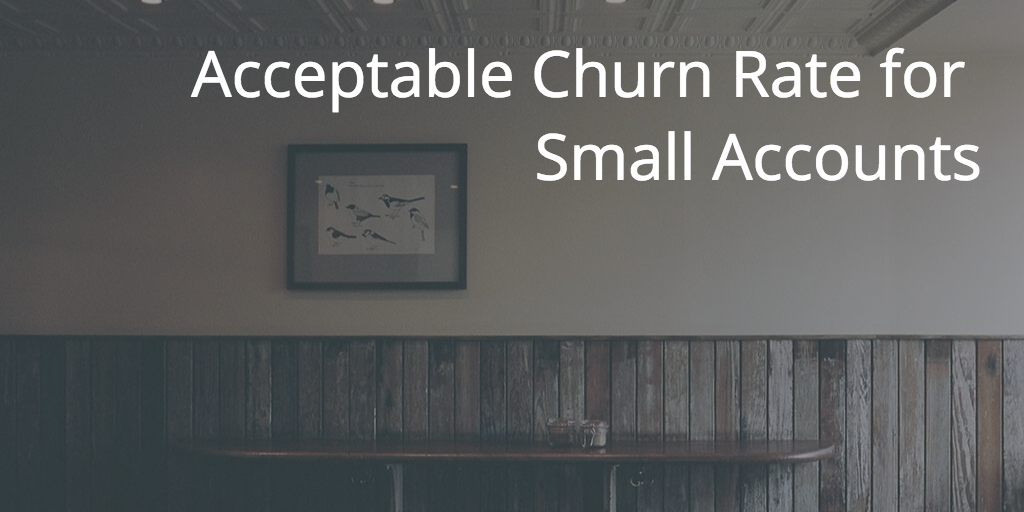 What drives a company to focus on Customer Success is changing. In the past, churn (or retention, depending upon how you look at things) was generally the catalyst.
What drives a company to focus on Customer Success is changing. In the past, churn (or retention, depending upon how you look at things) was generally the catalyst.
Once churn is under control, the catalyst changes to expansion; driving use, consumption, and revenue within existing accounts.
And these days, startups are building Customer Success into their DNA from the ground up, understanding that an acquire-any-customer-at-all-costs-until-churn-is-a-major-problem go-to-market strategy is the wrong way to do things and are avoiding that unnecessary step in the startup lifecycle.
That said, churn is still a problem for some companies, so when I answered this email about different churn rates across customer segments, I thought I’d share the answer with you, too, so we can all benefit.
Here’s the email…
“Lincoln, we had a potential investor look at our business and they were dismayed by our user churn.
This was surprising to us, as our large accounts churn at 6% annually, which we thought was quite good, our 2-3 user accounts at 11% annually, which according to your article on acceptable churn rates is starting to get a bit high.
But our individual accounts, however, churn at about 30% annually.
We were under the impression that individual accounts normally churned in this range. Do you have any insight there?”
Now I don’t want to say who asked this, but I will say they have a B2B SaaS product designed for very specific types of customers (think professional services orgs, consultants, etc.), not a low-end, horizontal B2C product.
So here’s the slightly edited response I sent her:
As I said in my “what’s an acceptable churn rate?” post, you want as little churn as possible. Annual customer churn of less than 5% and annual net revenue retention of > 120% is what the best companies have. So your high-end accounts are probably fine, your mid-range accounts are a bit high, and the 30%… well, let’s explore that.
30% annual churn is likely off-putting to any investor at first (and perhaps every) glance, so you need to either get it lower or be able to explain it away… probably both.
If those customers that are buying individual accounts are a very low-end, low-revenue, transient type of customer, perhaps that level of churn is acceptable… but for the industry you serve, and your product category, that level of churn seems (appears to me to be) excessive.
For that level of churn to be acceptable, it should be mostly unavoidable churn where, no matter what you do, how well you onboard, support, or otherwise enable your customers to be successful – and assuming you’re acquiring customers that have success potential in a way that isn’t overselling or mismanaging expectations – 30% are going to churn out. Unavoidable is just that.
The problem is that the level of truly unavoidable churn is almost always overestimated.
And if that level of churn is unavoidable, these customers better be super-cheap to acquire (CAC payback happens quick), cheap to onboard and support during their short lifetime (so at least they’re profitable), and there better be a huge total addressable market (TAM) because that 30% of customers that churn out are most likely no longer a part of your TAM.
Some truly transient markets like cell phone service and other utilities have customers that churn out and then come back (hence “transient”); but in B2B, that doesn’t happen outside of very horizontal products like marketing and project management.
That all said, if you can show that even with 30% customer churn you have low revenue churn (by expanding the revenue from existing “individual” accounts over time), then that might put investors at ease a bit. If you can do that while also lowering unavoidable churn (or show a plan to do that), then that number isn’t so bad.
You have to look at it from the investor’s perspective; worst case, they put money in and the market tanks and acquiring new customers is impossible. With 30% churn, that entire customer segment will be gone in 3 years. But if you are keeping and expanding customers, even if new customer acquisition drops to zero, the company not only continues, it actually grows.
Said another way, you need to acquire enough customers to fill that 30% hole every year just to stay at the same level of revenue, so out of the gate, they know some chunk of their money is just going to maintain the status quo rather than truly grow the company.
Investors don’t invest to just keep things the same.
Or it could be that they just didn’t want to say they weren’t interested so they used churn as a way to let you down easy.



